Part of enjoying a classic bike is having a purpose in riding it. For many, the purpose isn’t riding around aimlessly, it’s about going somewhere and doing something. With classic bikes, that often means arrive, helmet off, grab a brew, and start chatting to fellow classic-bikers-with-a-purpose. But it also involves scanning the lines of machines that make it to the likes of London’s Ace Café, Buxton’s main drag, the car park/bike park at J&S Northwich or beachside on the Hastings south coast – and mentally adding to your wish list as each season more bikes become classic or, that word we shouldn’t be ashamed of, investable.
Where they were built and where they’ve been ridden from are conversation starters, but every year there’s another consideration: when they have come from. And right now ’90s and early ’00s machines are coming to the fore. Why? It’s the nostalgia thing again, and inevitably tied to the first head-turner riders couldn’t afford back in the day.

The other thing about riding to the café rather than taking on too big a ride is that the ’90s was when sports bikes really came to the fore. And so too came bum ache from authentic race-type seats and wrist ache from riding in a position usually reserved by racers for end-of-race slowdown laps. Great and exciting bikes, but not exactly tourers.
And supermotos. Appealing to our inner hooligan, their seats were not actually designed to be sat on, mainly because you were either standing on the pegs, in the air, or just deposited in the mud.
But there’s always the mainstay classics: old Brits and cool ’60s Italians will always be machines many café-meet bikers have never actually seen in the metal. Here are eight bikes sure to start a conversation outside the café.
CCM 604
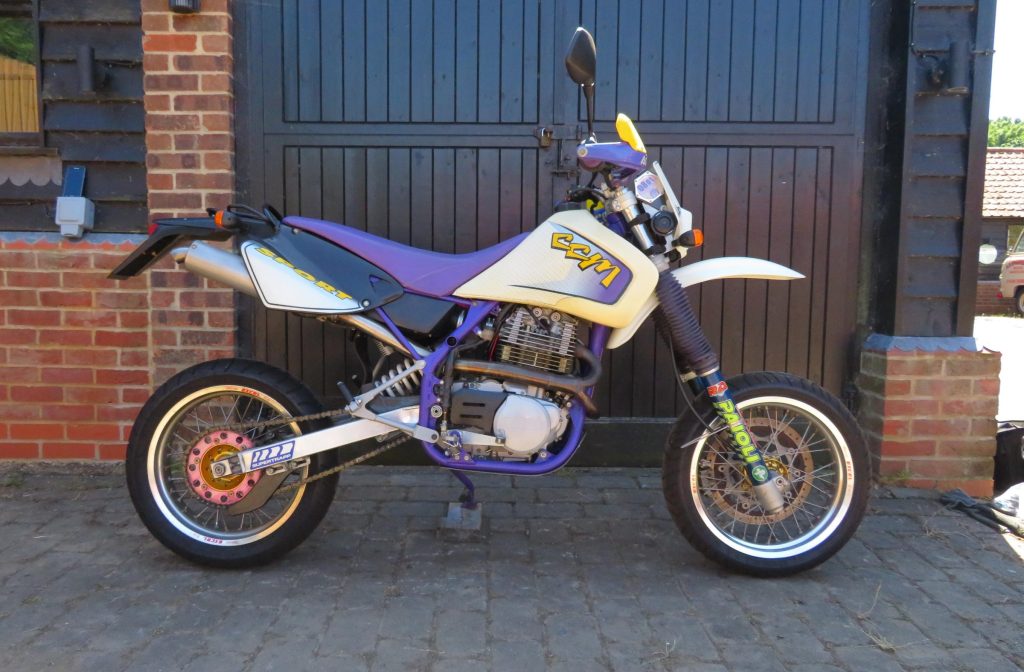
Designed to look mad, designed to sound mad, designed to behave mad, and marketed as all of the above, the CCM is one of those bikes to bring out your inner hooligan, even if you do suddenly need an urgent toilet break the first time it unexpectedly hoiks the front wheel in the air. Likely to be greeted as a superhero when you make it to the caff with a ride-length litany of headshakes in your wake.
It’s a bike you can’t ride at a steady throttle: you just have to bang it up and down the close ratio gears in a series of blart-blart-blarts. Some tolerate the 1998-2002 Rotax lump – keep on top of cambelt maintenance – some prefer the clockwork reliability of the later (2003-2005) 644 Suzuki motor.
Premium chassis, though, with high-quality suspension; they came in a series of guises, from headcase supermoto to deeply competent green lane blaster – providing you were blasting and not taking it into trials-riding territory. £1500 for a hard-worked ex-green-laner to £4000 for a really nice original bike (which had probably frightened its first owner into looking at it more often than riding it…).
Ducati 250 Desmo
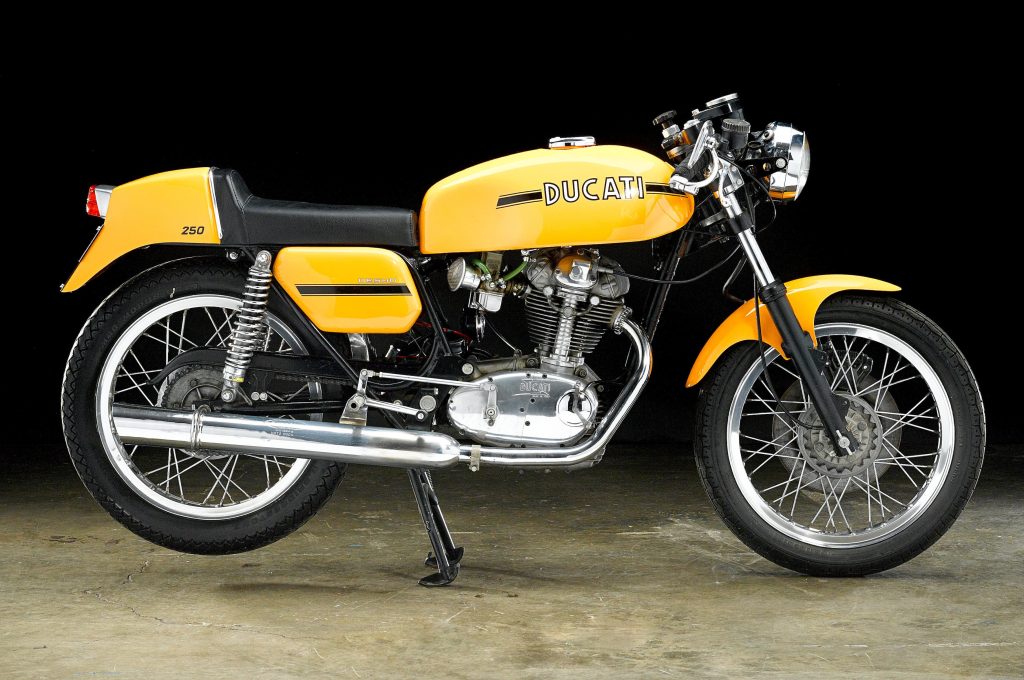
One conversation starter down the caff car park is usually along the lines of, “Blimey, I forgot they’d made those”, or, amongst the younger generation, “Is that a special?” when faced with an unfamiliar engine underneath a familiar tank badge.
When we think Ducati, we think thunderous V-twins. But Italians love their light-middleweights: the mid-’60s Ducati 250 Desmo, the product of 10 years dabbling with and developing a “desmodromic” race bike cylinder head (in which valves are both opened and closed mechanically, meaning no valve float) gave Ducati’s 250 some real bite. Racer looks and racer riding position were not misleading: this was a 100mph-plus machine in 1967. Make sure you swat up on the motor: you’ll be asked how it works.
But they fast became rare because they were often converted to racers and thrashed. Even in 1979 my friend Drew had just completed restoring his. Yellow and fabulous even then. Price? £6000 for a daily-ride-standard machine; £10,000-£15,000 for something remarkable and original.
Harley Davidson XLCR
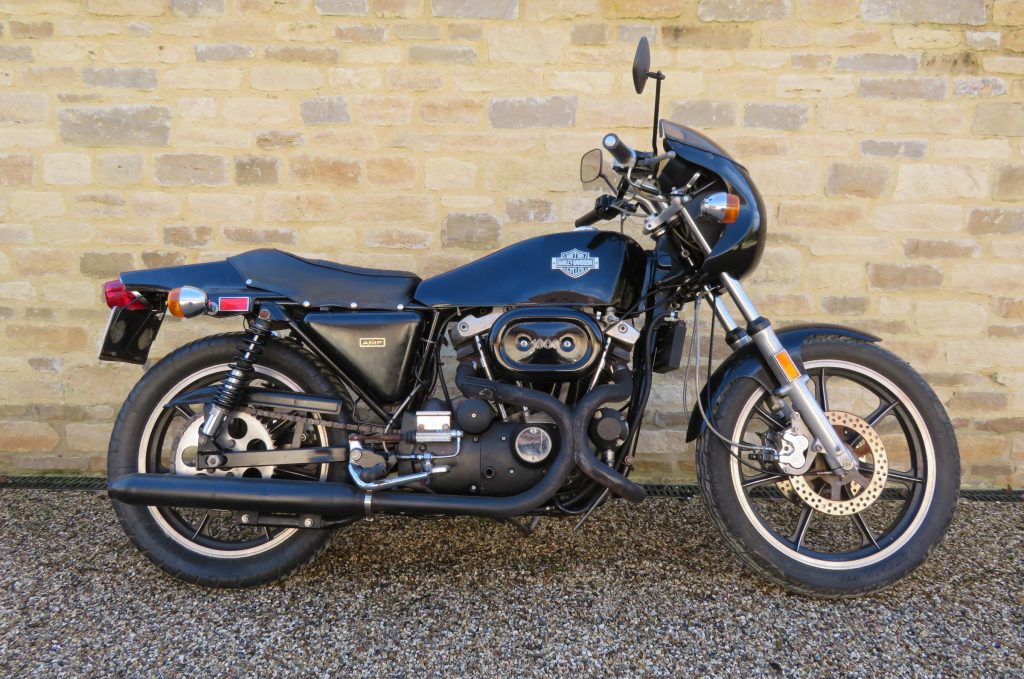
Right, the elephant in the room for a classic cruise down to the café: there has to be a Harley Davidson in the mix, but which one? There’s a confusing array of machines, all noisy V-twins, and all named with up to four letters of the alphabet followed by three or four numerical digits, and “Glide”, “Sportster”, “Fat Boy”, “Custom” or some other-unique-to-Harley name.
Common feature: cool, comfortable, statement transport with silhouettes that could only ever be Harley-Ds… except the XLCR café racer, complete with bikini fairing and moody black paint job. Based on its long-wheelbase siblings, with a distinctly lazy and torquey 1000cc motor from the XLCH Sportster, it was heavy, not a great handler, and lasted only three years in production, 1977-1979. Only 3000 were made. It was a flop.
So if you told your mates you’d be turning up at the caff on a Harley XLCR, their mind’s eye would probably flash up an image that you’d turned all Hell’s Angel. Café racer aesthetics wrapped around a huge and heavy V-Twin lump would certainly be an attention grabber. £10,000-plus for those to whom it would appeal.
Honda CB1000 Super Four “Big One”
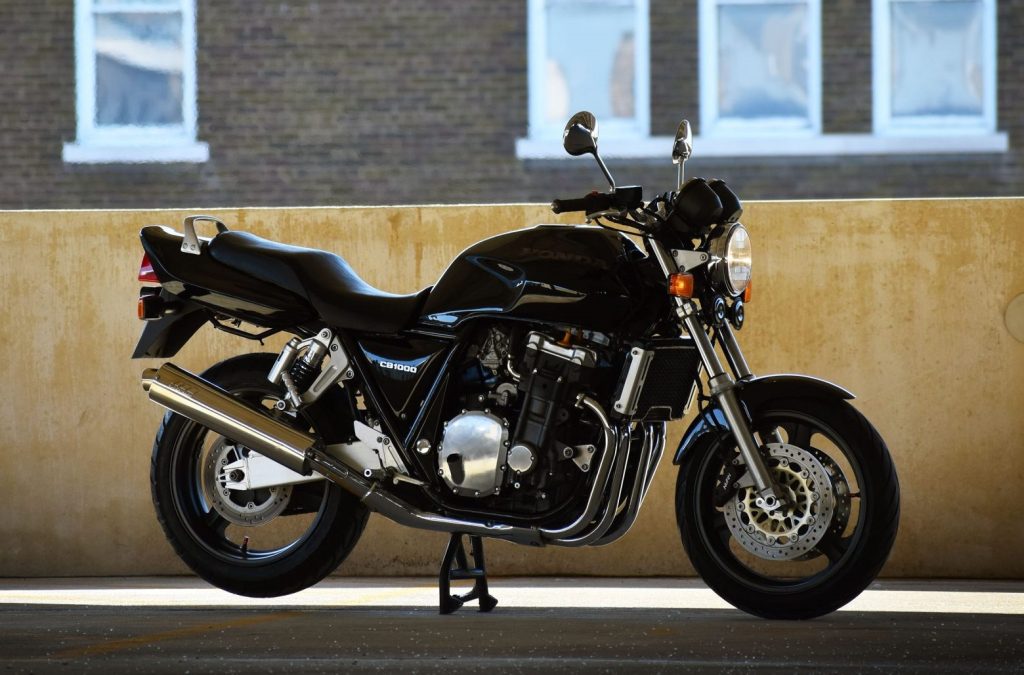
Yes, it’s big, a true muscle bike – the Dwayne Johnson of machines both in stature and character. A presence that says, nothing to prove.
Around in the early-mid 1990s, its engine was detuned for grunt compared to the CBR1000F motor upon which it was based. Only five gears rather than six, too. Its looks rearwards of the seat were of its day, a tail section slightly too long and awkward, which for years was considered to date it, but now suddenly a design feature asset.
But what a bike. Turbine smooth, comfortable, lazily powerful, as bombproof as a Honda could be, a machine that loses its mass once on the move. And suddenly values are climbing, especially with original UK bikes, although imported Japanese models are trying to ride the interest. An original and looked-after UK bike that was £2000 two years ago is now in £4000 territory.
Lambretta GT200
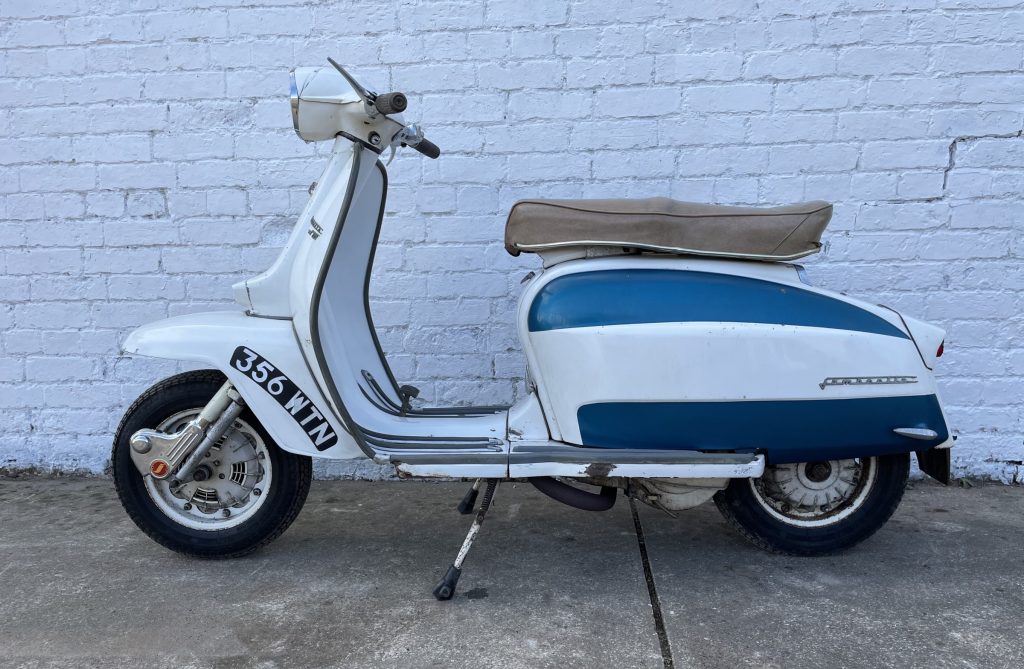
If it’s a pre-1971 Lambretta, then it’s a “proper one” from the Italian factory. After that date they were built in Spain and India, and, so far as enthusiasts are concerned, of inferior quality across the board, particularly paint.
The thing is, when you arrive at the caff on your 1964 GT200, those who know about these things will make a beeline for it. If it’s original, then we’re talking huge values – up to €100,000 in Italy, and anywhere between £20,000-£50,000 in the UK. Nobody quite knows why, where or when values exploded, but it’s likely to be the simplest of formulae: scooters were cheap and so disposable back in the day, so many are at best heaps of rust, but mainly gone.
High-end models are, ironically, sometimes less sought-after because they were more expensive so better cared-for. It’s the basic versions, in the spirit of demand for the unexceptional, that get enthusiasts excited. £5000 for a basket case, the price of a rundown terraced house for outstanding original examples, but into five figures for the usable.
MZ TS150
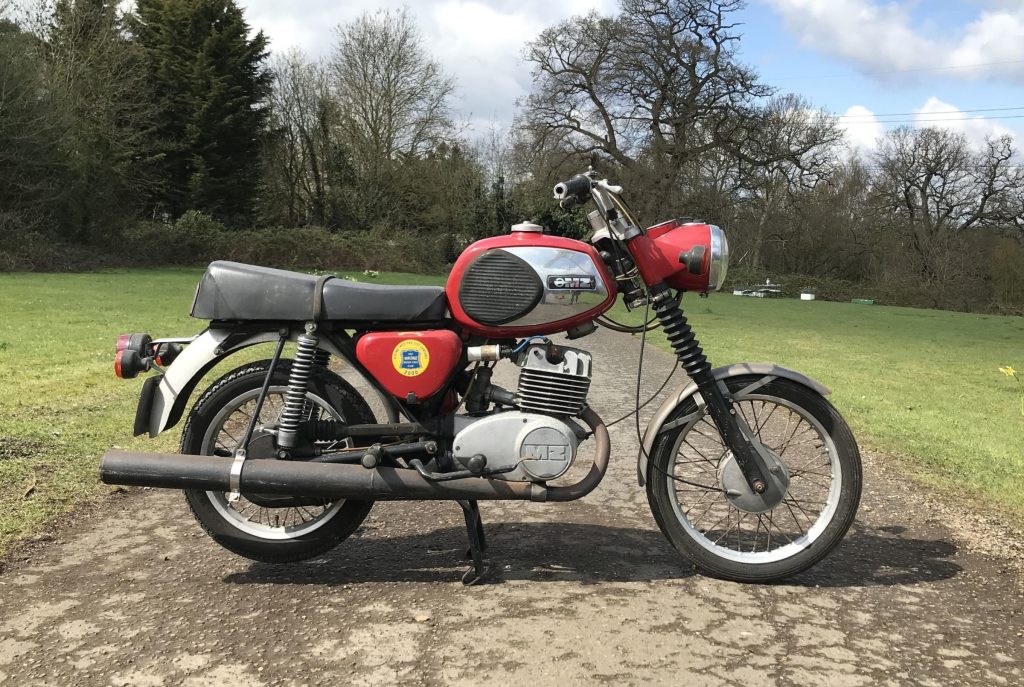
MZs are about as stylish as a docker’s grimy hi-vis jacket. There’s not much to go wrong with them, and maintenance demands are rudimentary, probably because they define “utilitarian”. If it doesn’t have a function, then it isn’t bolted to an MZ. Components were designed and positioned only according to essential need.
MZ’s tough single-cylinder two-stroke engineering has its roots in pre-WWII East German motorcycle design, built not to go wrong, with age-old tech that’s evolved to be as reliable as clockwork, except probably not as sophisticated. Electrics, however, can be moody. They did get a reputation as being unreliable because they were cheap to buy and so maintained on the cheap too.
Being neither stylish nor valuable, they thrived amongst the ranks of either the eccentric, or riders who had no interest in bikes and simply viewed them as essential cheap transport – harking back to their early functional days in East Germany. Park up at the caff, and you’ll soon be attracting interest from bikers walking up slowly shaking their heads, and inevitably talking about how ugly but somehow beautiful your MZ is, and likely comments about its to-the-end-of-the-world capability. Pay £2000 for a runner, £4000 for a minter.
Yamaha XT500
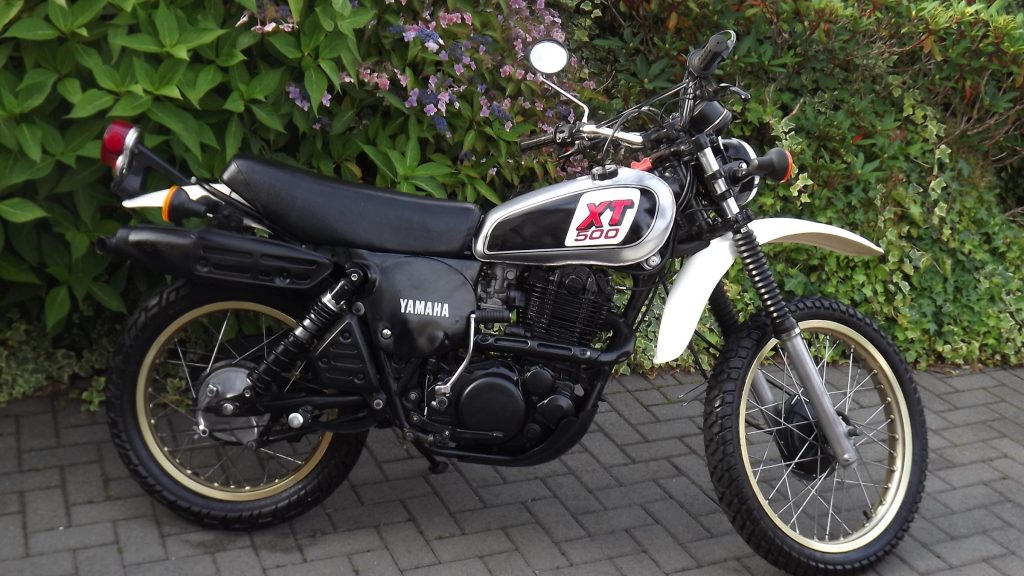
“Blimey, I wish I’d kept mine and looked after it instead of stripping it and wrecking it blasting round the fields.” If ever there was a nostalgic bikers’ mantra, that’d be it. It’s a line that’d be equally applicable to the Yamaha’s 1970s DT predecessors, Honda’s XL500 and Suzuki’s TS models, and many more 1970s and ’80s trail bikes.
They were meant to look like they could do the job of a factory enduro or motocross racer, but a weekend in the mud, followed by a couple of weeks in a damp shed took its toll. Factory racers were meticulously cleaned after every outing, few trail bikes were, their soggy covering of dirt often worn for weeks as a trophy statement of weekend adventure your mate’s RD350 could never provide.
So a 1980 Yamaha XT500 in original condition is a rare beast. Yes, restorations are out there, but there’s something about originality and the stories it can tell. What was a cheap bike not that long ago is now a £5000 plus-certainty for a good one, with originals nudging £10,000, or even more.
And finally…
Vincent Black Lightning
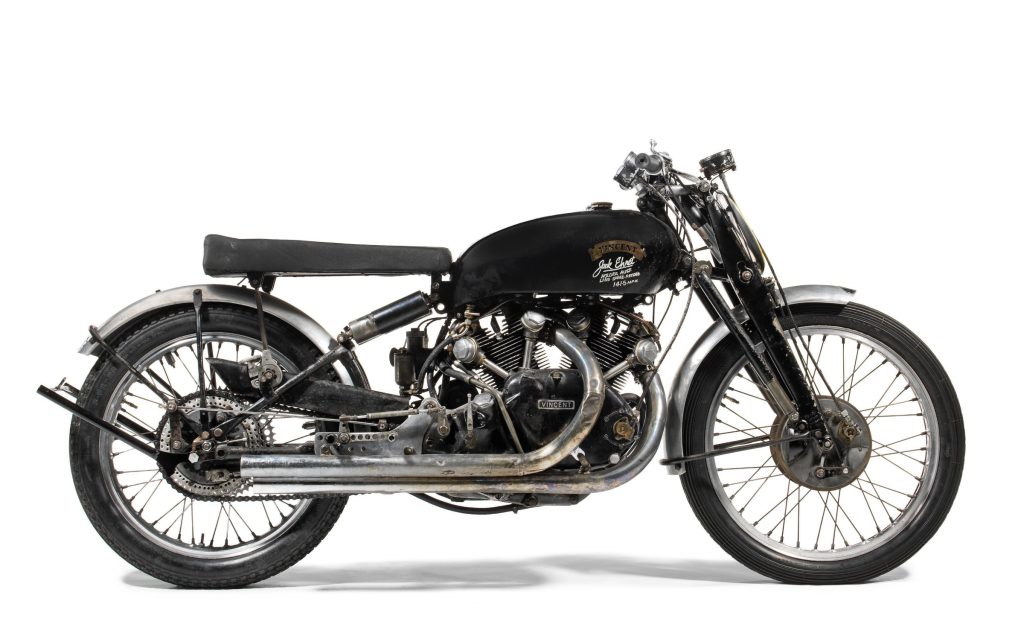
To certain generations, many classic British bikes look pretty similar. They have a look: usually a black fuel tank, usually a vertical-ish cylinder barrel or two, usually an elegantly-curved exhaust downpipe and megaphone exhaust, a crankcase seemingly carved from an ingot of steel, huge drum brake, complicated multi-element front forks – and no rear suspension – and often ton-up clip-ons or low bars, and a speedo that whacked you on the chin at every bump in the road.
So if you turned up on a Vincent Black Lightning, then it might take a few minutes for the relevance of your steed to sink in. Some might think it a Vincent Black Shadow (pretty rare in itself, and around £70,000-£80,000) but then some might realise it was a Lightning, one of only 31 made, a race version of the Shadow, but with an uprated 1000cc V-twin pushing out 70bhp.
In 1948, an American named Rollie Free stripped down to his swimming trunks and positioned himself so that he was lying flat on his stomach on the rear mudguard of his Lightning, with his legs outstretched behind him in a nod to early aerodynamic (if not self-preservation) understanding, and set a new American national speed record of 150mph at Bonneville Salt Flats. In 2018 a Lightning sold at a Bonhams auction in Las Vegas for $929,000. That would get the banter going on a sunny Sunday morning bike meet. Have you looked under that tarpaulin at the back of your grandad’s garage lately…?
Check out the Hagerty Media homepage for daily news, features, interviews and buying guides, or better still, bookmark it.










According any sort of classic status to an MZ is to ignore the grinding lifelong misery under communism of those who built them. For a value, ask a Ukrainian. I know, I know; there are also those who admire the old Ural with a sidecar, and I wonder: exactly how blind do you have to be to countenance a “market” for such things?
The MZ?…hilarious. Even back in period you only bought one as a cheap commuter bike, That Yamaha 500…stunning bike but you wouldn’t want to do more than 100k’s on those tyres…
You overlooked my SILK 700s MK2 – one of the very last built. Hand crafted – built in Derby. A fast lightweight 2 stroke water cooled tourer that took me all the way to North Cape and many other destinations across the width and breath of Europe. Faultless apart from a broken clutch cable (component supplier’s faulty end nipple let go in Wales) and radiator seam weld weeped in Finland.
Sidney, I understand your view but I don’t think the workers who built MZ would agree. Surely they would not want communism back, but many East Germans are fed up with the idea that everything they did was second class. Both designers and workers took pride in the bikes they produced with limited resources compared to the west and they are proud to see them being appreciated today. Appreciating the bikes is not condoning or romanticising communism.
MZs are hugely popular in Germany right now, and especially in the east among the people whose fathers and grandfather’s built them. A good idea is a good idea, regardless of where it comes from. That being said, I’ve had several and I haven’t found them to be as reliable as claimed, just fairly easy to fix.